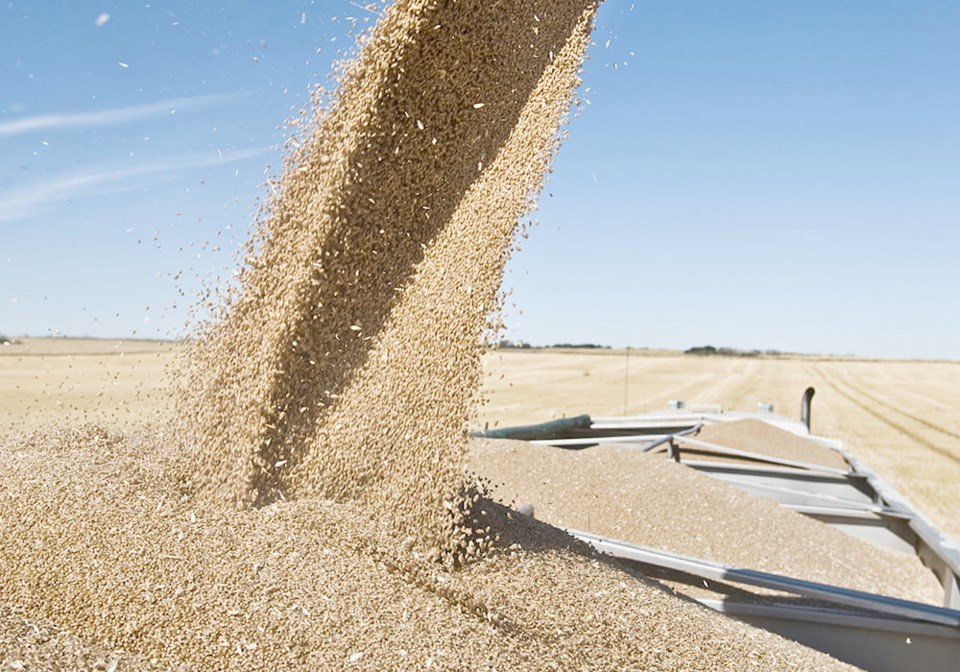GROSSE ISLE, Man. — In farming, there are late adopters of technology, there are early adopters and then there’s Rick Rutherford.
As an example of his eagerness to try new things, Rutherford was ahead of the curve on yield mapping. He began using yield monitors and producing yield maps more than 25 years ago.
“I’ve got one in the office — 1997 was the first yield map that we generated,” he said.
Now, on his farm northwest of Winnipeg, Rutherford could be one of the first producers in Manitoba to experiment with a protein monitor in his combine.
John Deere offers the HarvestLab 3000 on its S700 Series combines. The sensor can measure the protein levels in wheat and barley on the go. It can also measure oil content in canola.
For now, Rutherford plans to use the technology in his spring wheat fields, mostly to manage how he uses nitrogen and to maximize yields.
In 2022, Rutherford produced an excellent spring wheat crop — with yields above 80 bushels per acre. But the yields and protein levels weren’t consistent.
“Last year was a tremendous production (of spring wheat). But there were areas in that field where the protein was 11 (percent) and there were places where the protein was 15.5,” Rutherford said during a 4R field day held Aug. 9 at his farm.
“The yield curve in wheat flattens out at a certain point. And that point is 13.5 percent. So there are areas in that field with 11.5 percent (protein) that still had yield potential, that might of (reached) 100 bu. per acre.”
The 4R event was at Rutherford’s farm because it’s the site of Innovation Farms, a commercial-scale smart farm managed by Enterprise Machine Intelligence and Learning Initiative.
Better known as EMILI, it has a mandate to help Canada become a leader in digital agriculture.
Fertilizer management and the principles of 4R (right rate, right source, right time and right place), was the focus of the field day, organized by the University of Manitoba, Manitoba Agriculture, the Canola Council of Canada, Fertilizer Canada, EMILI and Enns Brothers.
Just before lunch, Rutherford explained that the protein monitor should help him pinpoint areas in a field where yield potential is being lost and identify spots where he’s using too much fertilizer.
“Our idea is we could probably raise the overall yield on a piece (of land) by five or 10 percent, (without) applying any more nitrogen, by putting it on the proper place…. The protein is telling us that N goal.”
Research shows that spring wheat yields hit a plateau at 13.5 percent protein. Therefore, producers can use that protein target to maximize yield and nitrogen efficiency.
“If you have 12.5 percent protein, it indicates that you left yield on the table, or that you could have increased your yield in that field by applying more nitrogen,” wrote agronomist Thom Weir in The Western Producer in 2020.
Having a protein monitor in the combine will provide a finer level of data to produce a protein and yield map of a particular field.
“You can overlay it with the yield and really start seeing if our VR (variable rate fertilizer application) has been good because we have a protein measurement which is highly correlated to nitrogen,” said Dave Ives, an agronomist with Enns Brothers, a chain of John Deere dealerships. “I think it’s going to help us dial in the VR even more.”
Producers could also use a protein monitor to segregate spring wheat fields with higher levels of protein to capture a premium price from grain buyers.
But with the logistics of trucking and storing that high protein wheat in a different bin, the premium might not be worth the hassle.
You can no longer count on social media to deliver important news to you. Keep your news a touch away by bookmarking SASKTODAY.ca's homepage at this link.
Here's why you should bookmark your favourites.
Subscribe to SASKTODAY.ca newsletter to get our daily news to your inbox.

